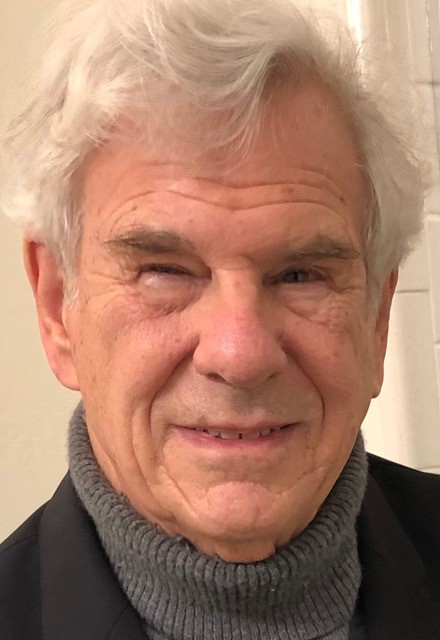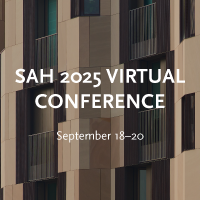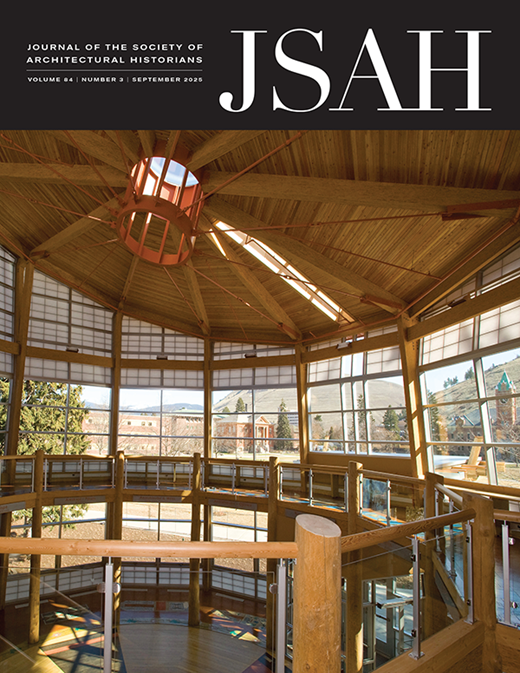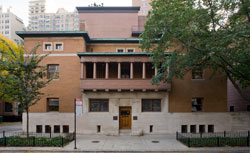-
Membership
Membership
Anyone with an interest in the history of the built environment is welcome to join the Society of Architectural Historians -
Conferences
Conferences
SAH Annual International Conferences bring members together for scholarly exchange and networking -
Publications
Publications
Through print and digital publications, SAH documents the history of the built environment and disseminates scholarship -
Programs
Programs
SAH promotes meaningful engagement with the history of the built environment through its programs -
Jobs & Opportunities
Jobs & Opportunities
SAH provides resources, fellowships, and grants to help further your career and professional life -
Support
Support
We invite you to support the educational mission of SAH by making a gift, becoming a member, or volunteering -
About
About
SAH promotes the study, interpretation, and conservation of the built environment worldwide for the benefit of all
2025 SAH Fellow
Stephen Tobriner 
Stephen Tobriner (pictured) is an architectural historian, educator, and archivist with a significant record of scholarly achievement, mentorship, and public engagement.
Tobriner received his Ph.D. from Harvard University (1972) specializing in the history of architecture and cities in Spain, Italy, and Latin America 1600-1750 and Mesoamerican architecture. His graduate paper, "The Fertile Mountain: An investigation of Cerro Gordo's importance to the town plan and iconography of Teotihuacan," Mesa Redonda (Sociedad Mexicana de Antropología, Mexico), 1972, pp. 103-115, provided an important and hitherto unnoticed iconographic key to understanding the ancient city of Teotihuacan in Mexico.
He taught the history of architecture and urbanism in the Architecture Department of the College of Environmental Design, University of California, Berkeley, from 1971 until 2006. Along with Spiro Kostof, Norma Evenson, Dell Upton, and Kathleen James-Chakraborty, he pioneered a revolutionary survey course in the late 1970s which included the architecture, urbanism and landscape history of the world. For his teaching of this course and his direction of its graduate teaching assistants he was awarded the University of California, Berkeley, Outstanding Faculty GSI Mentoring Award in 2004. Tobriner also taught courses in Mesoamerican architecture, Baroque architecture, cities in disaster, the city of San Francisco, the history of structures, and socially responsible architecture. In the Engineering Department he team-taught a course entitled Renaissance Engineers alongside a structural engineer, a mechanical engineer, and an historian of science. He also taught Baroque architecture as a visiting professor in the Architecture Department of the University of Palermo, Sicily, and was a member of the Italian Department of the University of California, Berkeley.
From 1973 to 1997 Tobriner was the curator of the College of Environmental Design Documents Collection, later to become the CED Archives. He directed, catalogued, supervised patrons, collected new materials, preserved accessions, and publicized one of the most extensive architectural and landscape archives in the western United States.
Tobriner holds a long fascination with the politics, sociology, and technology of earthquake-resistant engineering. He has published numerous articles and two books on the history of earthquake-resistant construction.
Fellows of the Society of Architectural Historians
Annmarie Adams
Barry Bergdoll
Richard J. Betts
Michael Blackwood
Eve Blau
Rosemarie Haag Bletter
David Brownlee
Robert Bruegmann
Maristella Casciato
Zeynep Çelik
Swati Chattopadhyay
Meredith L. Clausen
Gail Dubrow
Diane Favro
Kenneth Frampton
Alice T. Friedman
Dianne Harris
Dolores Hayden
Thomas S. Hines
Lynne Horiuchi
Karen Kingsley
Francis R. Kowsky
Carol Herselle Krinsky
Henry H. Kuehn
Phyllis Lambert
Richard Longstreth
Mary McLeod
Barbara Miller Lane
Barry Bergdoll
Richard J. Betts
Michael Blackwood
Eve Blau
Rosemarie Haag Bletter
David Brownlee
Robert Bruegmann
Maristella Casciato
Zeynep Çelik
Swati Chattopadhyay
Meredith L. Clausen
Gail Dubrow
Diane Favro
Kenneth Frampton
Alice T. Friedman
Dianne Harris
Dolores Hayden
Thomas S. Hines
Lynne Horiuchi
Karen Kingsley
Francis R. Kowsky
Carol Herselle Krinsky
Henry H. Kuehn
Phyllis Lambert
Richard Longstreth
Mary McLeod
Barbara Miller Lane
Christopher Curtis Mead
Naomi Miller
Keith N. Morgan
Steven Nelson
Dietrich Neumann
Joan Ockman
James F. O’Gorman
Therese O'Malley
Ken Tadashi Oshima
C. Ford Peatross
Anoma D. Pieris
Jack Quinan
Robert B. Rettig
Leland M. Roth
Arijit Sen
Robert A. M. Stern, FAIA
Nancy Stieber
Damie Stillman
Paul V. Turner
Dell Upton
Abigail Van Slyck
David Van Zanten
Patricia Waddy
Mabel O. Wilson
Richard Guy Wilson
Gwendolyn Wright
Fellows in memoriam
James S. AckermanHilary M. Ballon
Kathryn Bishop Eckert
H. Allen Brooks
Marian Card Donnelly
Norma Evenson
John D. Forbes
Jean R. France
Alan W. Gowans
Richard Howland
Ada Louise Huxtable
William L. MacDonald
Elisabeth Blair MacDougall
Carter H. Manny, FAIA
Eileen Michels
Henry A. Millon
Denys Peter Myers
Osmund Overby
Seymour H. Persky
Charles E. Peterson
William H. Pierson Jr.
Adolph K. Placzek
Jessie J. Poesch
Joseph Rykwert
Pauline Saliga
Vincent Scully
George B. Tatum
Stanley Tigerman, FAIA, RAAR
Anthony Vidler
Robert W. Winter
Barbara Wriston


